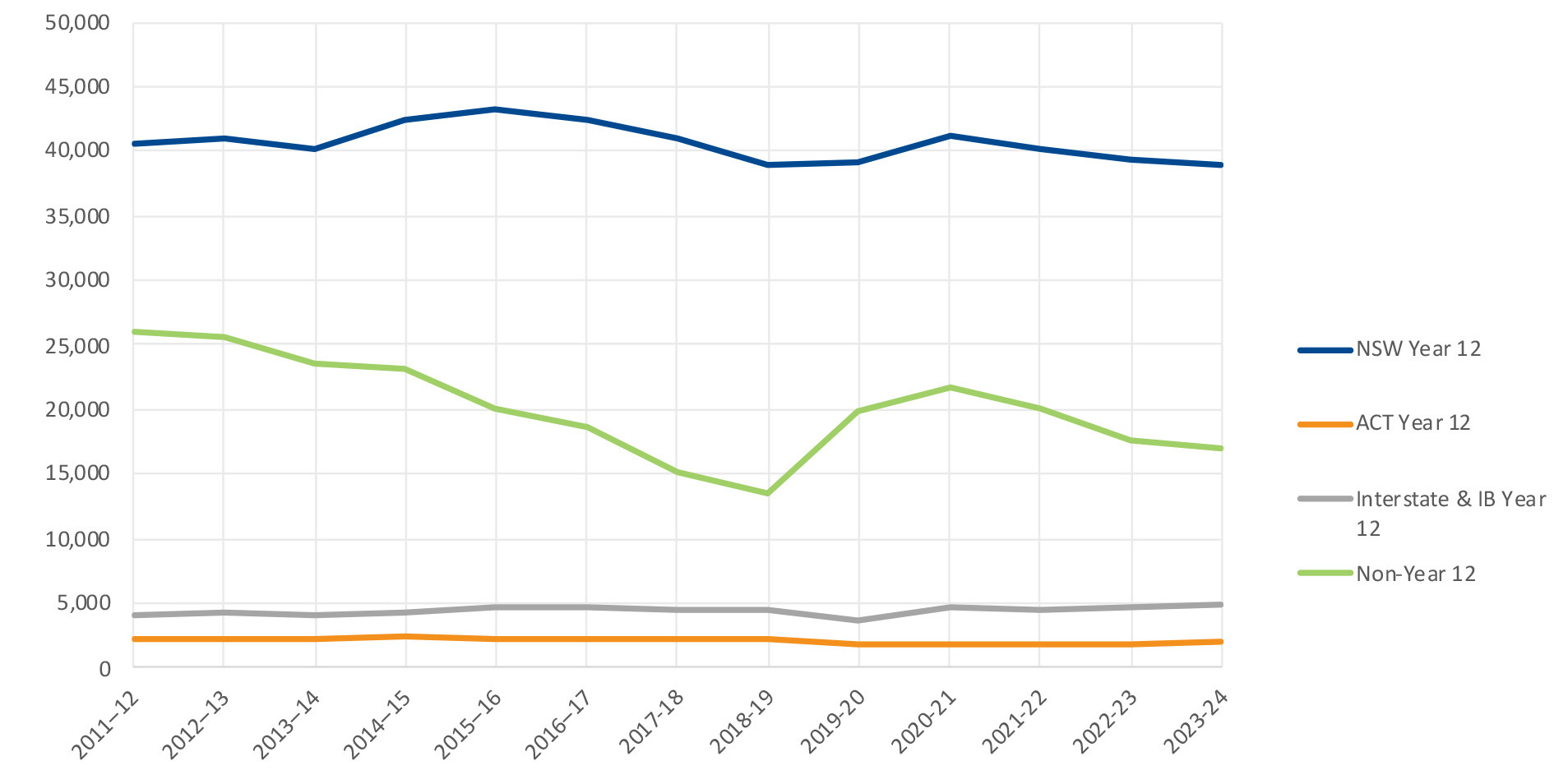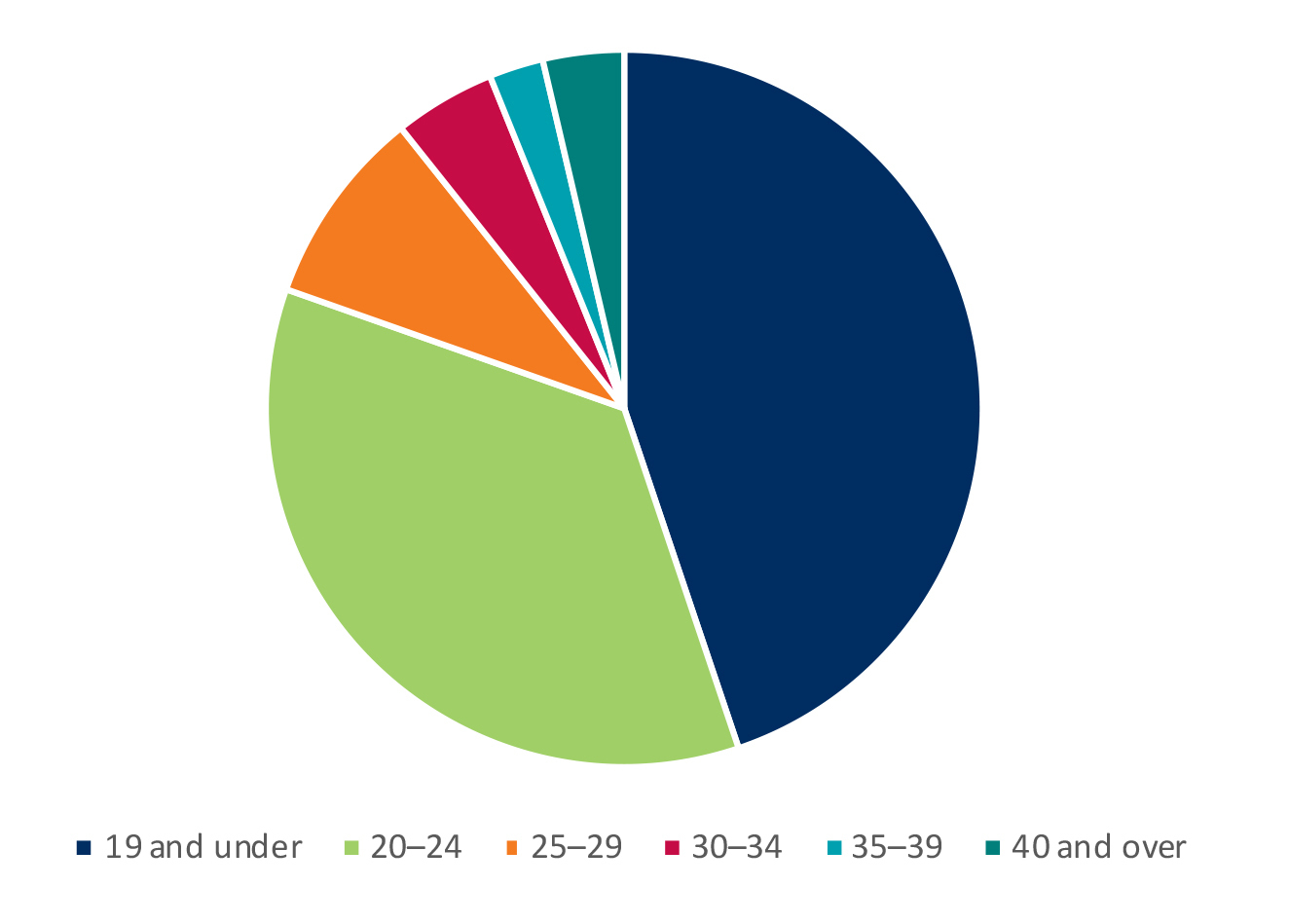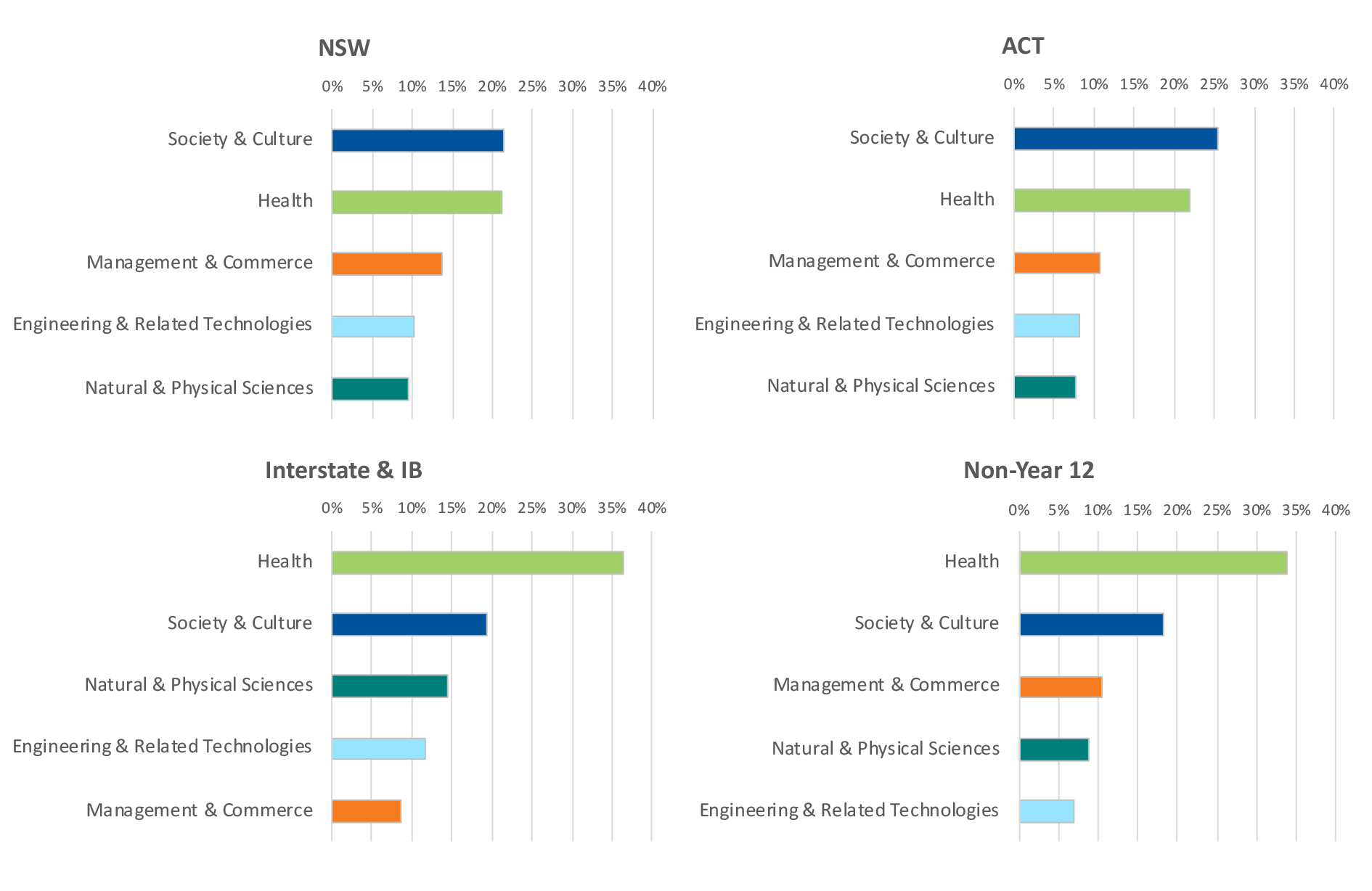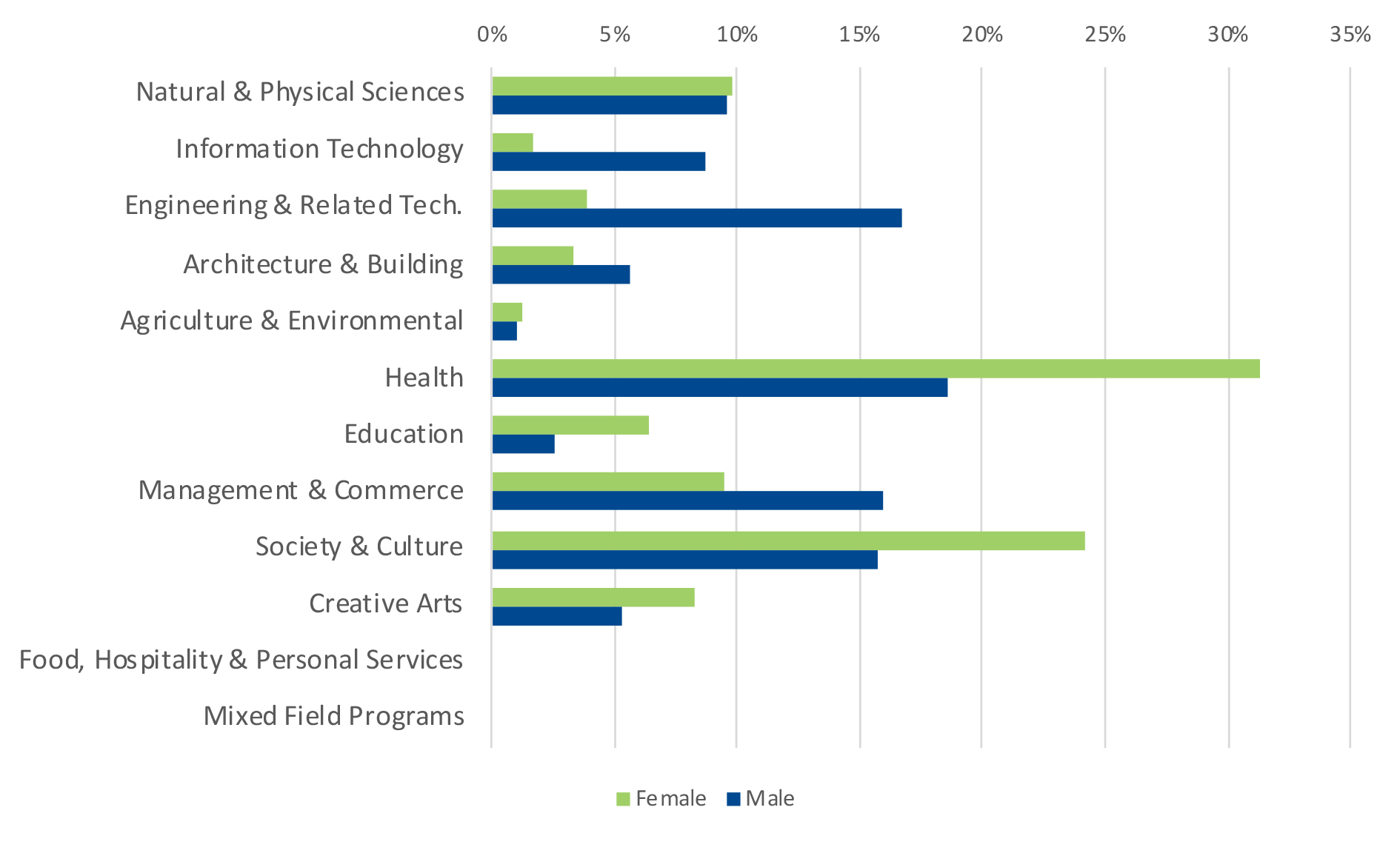19 Oct 2023
Statistics
Domestic undergraduate application statistics at early bird closing 2023
Applications for tertiary study in 2023–24 opened on Wednesday 1 April 2023 and early bird applications closed at midnight on Friday 29 September 2023. (Students can still apply after this date, but they pay a higher processing charge.)
UAC received 62,846 domestic applications for undergraduate study in the first six months of the 2023–24 admissions year, 650 (1%) less than by early bird closing last year.
Many students have also applied directly to individual universities for study next year to maximise their chances of receiving an offer. UAC has processed another 94,700^of these applications on behalf of individual universities#. These applications are not included in the following analyses.
^Applicants may apply directly to several universities so this figure is not the count of unique applicants, but the number of applications received
#UAC processes direct applications on behalf of Australian Catholic University, Australian College of Physical Education, Australian National University, CQUniversity, Macquarie University, University of New England, University of Tasmania, University of Technology Sydney, University of Wollongong and Western Sydney University.
Download all the early bird closing statistics (xlsx 53kb)
Applications by applicant type
Applicants are divided into four types: NSW Year 12s, ACT Year 12s, Interstate and International Baccalaureate Year 12s, and non-Year 12s.
Applications at early bird closing by applicant type: 2011–12 to 2023–24

Gender analysis
The gender split of applicants this year shows that 56% of Year 12 applicants were female, while 57.9% of non-Year 12 applicants were female. These figures are similar to those from last year.
Age analysis
As in previous years, almost all Year 12 applicants were 19 years old and under (99.8%). Around 80% of non-Year 12 applicants were 24 years old and under.
The breakdown by age group for non-Year 12 applicants is shown in the following chart.
Non-Year 12 by age group: 2023–24

First preference analysis
Domestic undergraduate applicants can choose up to five course preferences. Their first preference is the course they would most like to study.
First preferences by field of study and applicant type
The top five fields of study listed as first preferences by NSW and ACT Year 12 applicants were identical. Both groups had most first preferences in Society & Culture.
For non-Year 12 and interstate and International Baccalaureate Year 12 applicants, most first preferences continued to be in Health, followed by Society & Culture.
Overall, Health has again taken the top spot as the favoured field of study, with 25.7% of early bird applicants listing it as their first preference. Society & Culture came second, receiving 20.6% of first preferences across all applicant types.
Field of study by first preferences and applicant type: 2023–24

First preferences by field of study and gender
Both females and males had most first preference courses in Health, as it was last year. Similarly, like last year, the spread of first preference courses across fields of study was more even for males than for females.
Over half of female applicants listed their first preference course in either Health (31.3%) or Society & Culture (24.2%). In contrast, popular fields of study for males included Health (18.6%), Engineering & Related Technologies (16.7%), Management & Commerce (16.0%), and Society & Culture (15.7%).
Compared with males, a smaller proportion of females had first preference courses in Engineering & Related Technologies, Management & Commerce, and Information Technology.
Field of study of first-preference courses by gender: 2023–24
